Gyeongju’s Ancient Downtown Attractions
Present-day Gyeongju might be a busy city home to 300,000 Koreans going about their stressful, modern lives, but the ancient past is never far away. Just within the downtown area, there’s a number of historic attractions, dating from the days when this was the most important city on the peninsula.
Most people rent bikes during a tour of downtown Gyeongju, but we looked at the map and decided to hoof it. This was a mistake. Although the city center feels small, the various sites are quite spread out, and taxis can be hard to find. We could have seen a lot more had we been on two wheels.
After spending the morning in Yangdong Village and later visiting the Daeneungwon Royal Tombs, the next stop on our itinerary was the Cheomseongdae Observatory — built in the 7th century during the reign of Queen Seondeok, this is the oldest astronomical observatory in East Asia. In fact, it’s one of the oldest scientific structures still standing on the entire planet. Cheomseongdae literally means “star-gazing tower” and was constructed with 362 stone slabs which represent the days of the lunar year.

The ancient woods of the Gyerim Forest spread out to the south of the observatory. According to legend, in the year 65 AD, townspeople heard a rooster crowing in the middle of Gyerim and, upon investigating, discovered a golden box hanging from a pine tree. Inside was Kim Alji: the original progenitor of the Kim Clan, who would go on to found Silla. Today, 1.7 million Koreans believe that their lineage traces directly back to Kim Alji, and the Gyerim Forest is considered the birthplace of these “Gyeongju Kims”.
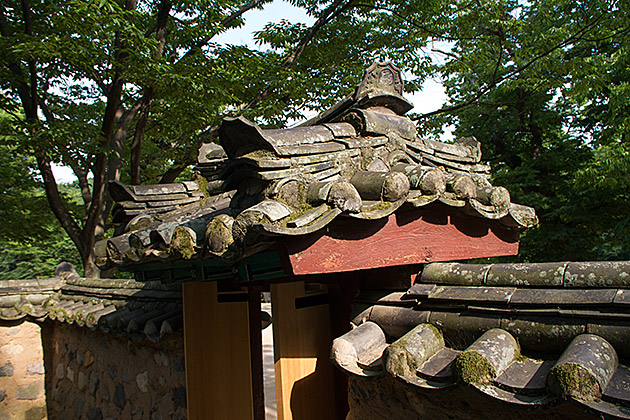
We walked through a couple of beautiful pastures, including one with the questionable name of Rape Flower Field, to arrive at the ruins of the Hwangnyongsa Temple. Before it was destroyed during 13th century Mongol invasions, the “Golden Dragon” temple was the most important in Korea. All that remains today are some slabs and foundation blocks which provide a rough indication of how large it once was.
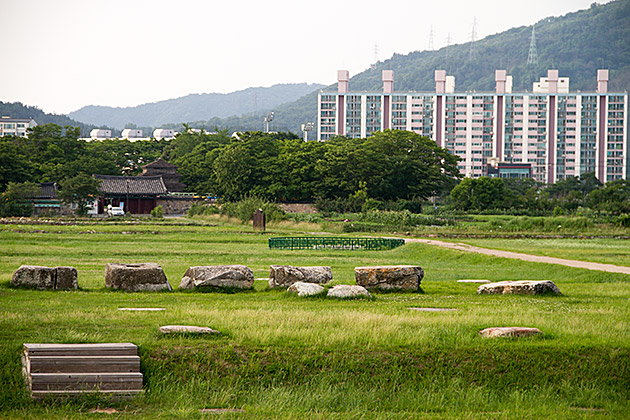
More impressive is the nearby Bunhwangsa Temple, which was originally built in 634 and translates to “Fragrant Emperor”. The temple has been renovated and rebuilt throughout its lifespan, so doesn’t look anywhere near its age. Except, that is, for the ancient stone pagoda which stands in the courtyard. It’s thought to have originally stood nine stories tall, though only three levels remain today. Bunhwangsa is also worth a visit for its huge bell which you can pay ₩1000 ($0.90) to ring. I did so and, wanting to get my money’s worth, slammed the wooden trunk into the bell so hard I thought it might crack. And yes, it was worth the money.
Locations on our Map: Cheomseongdae Observatory | Gyerim Forest | Hwangnyongsa Temple | Bunhwangsa Temple
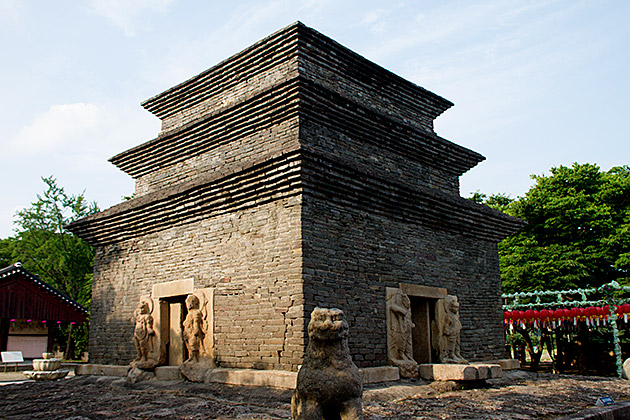

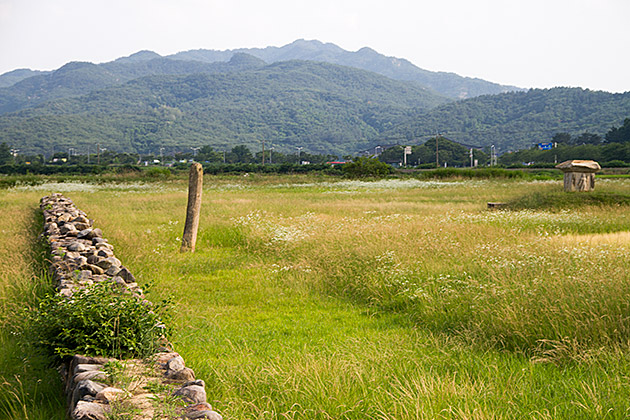
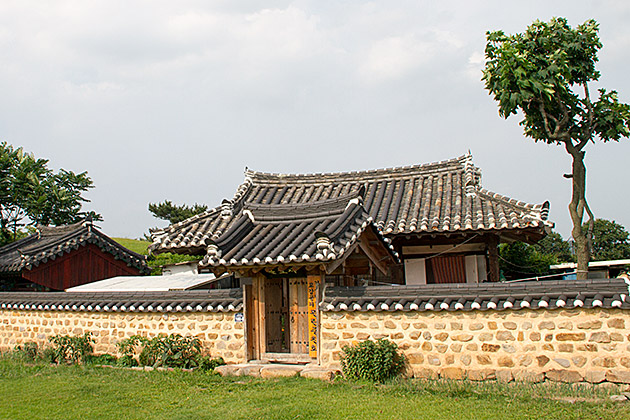
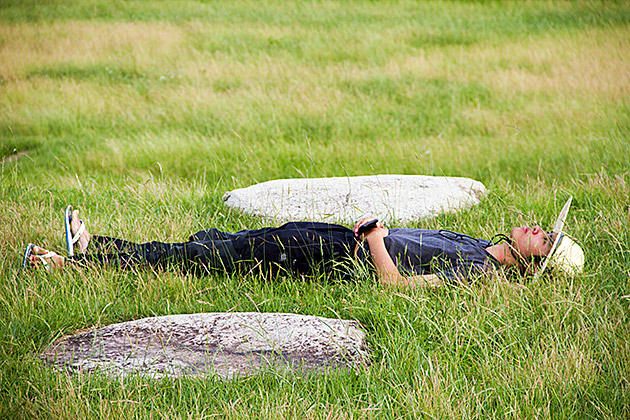
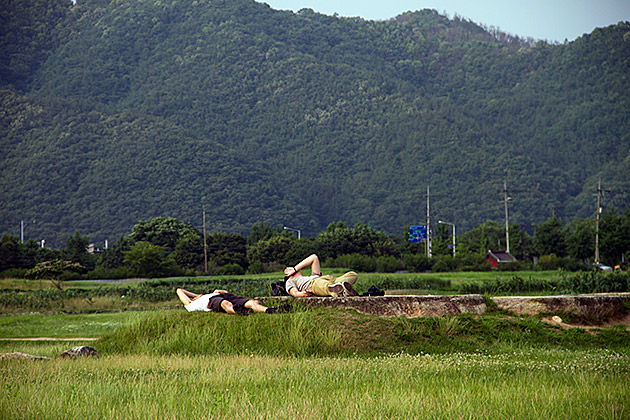
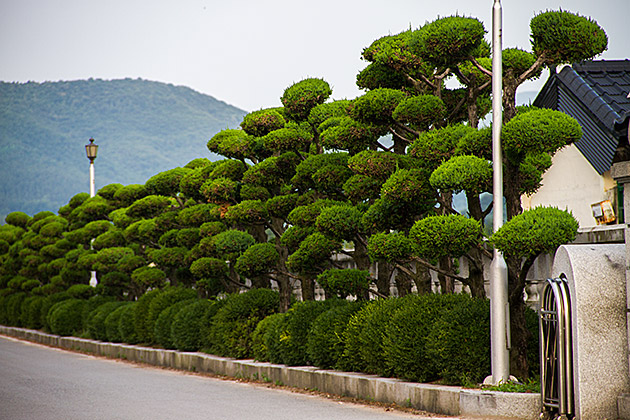
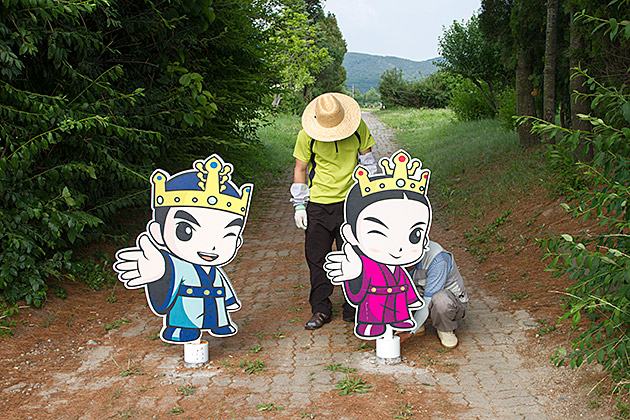
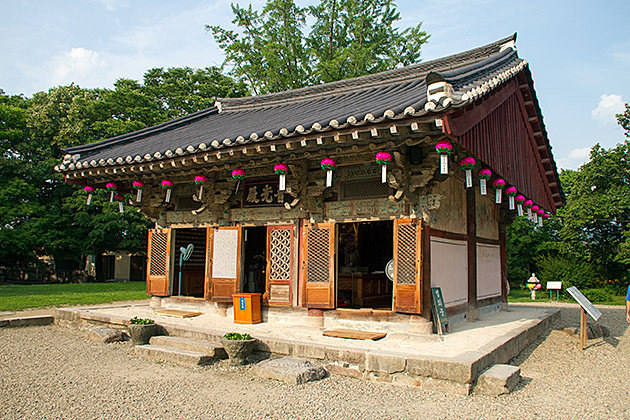
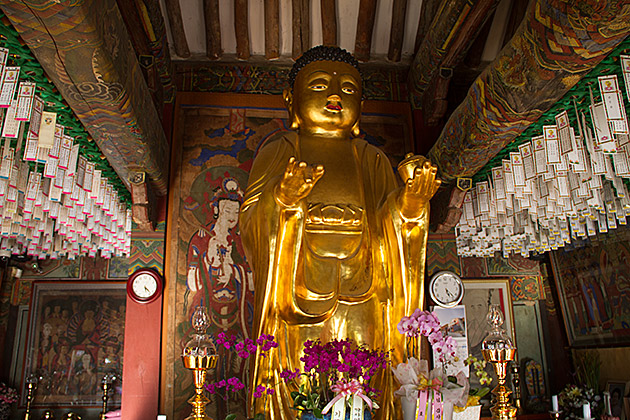
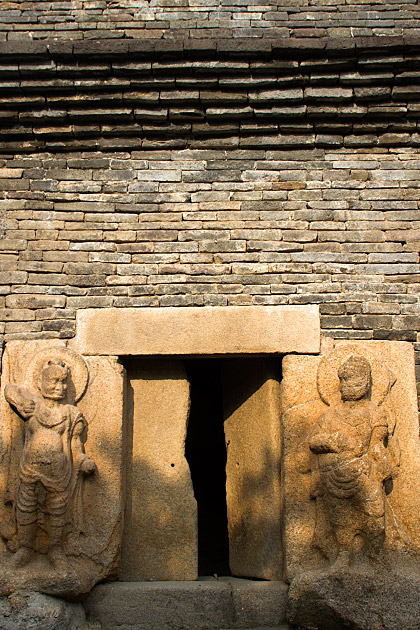
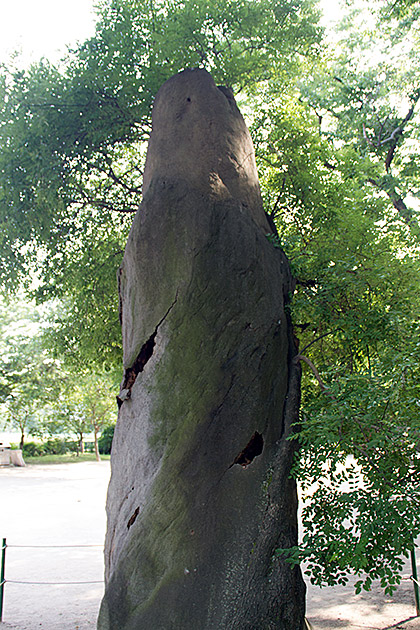
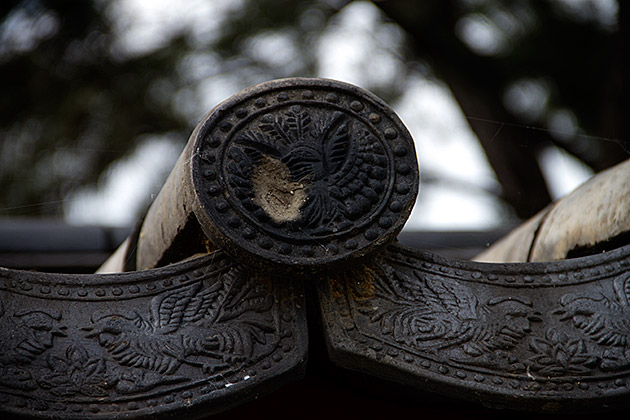

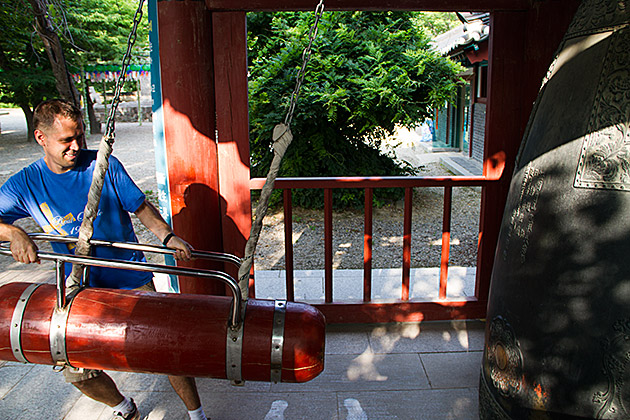
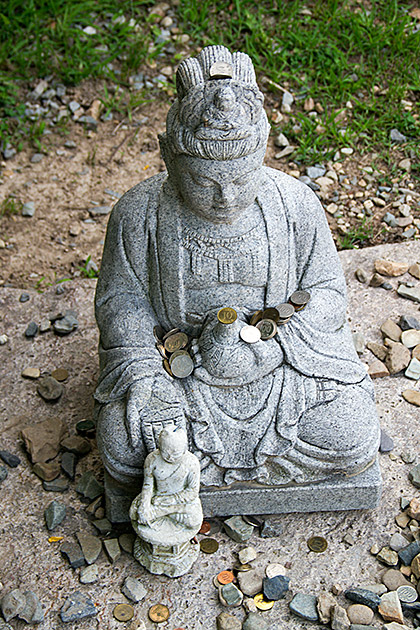
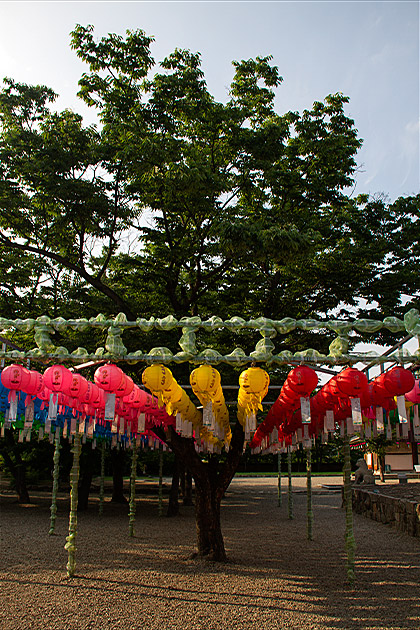
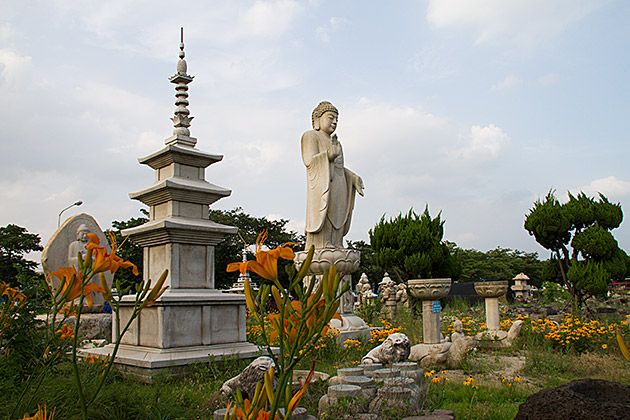

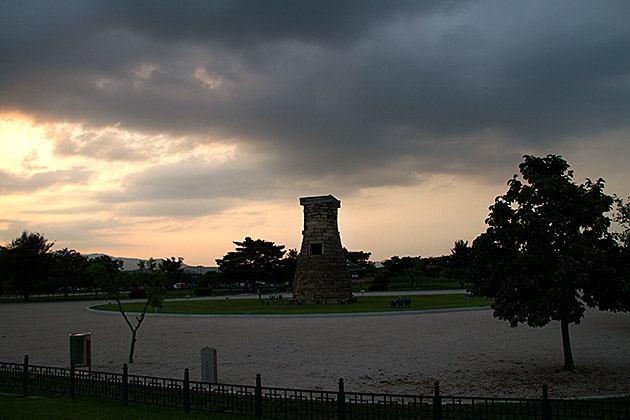
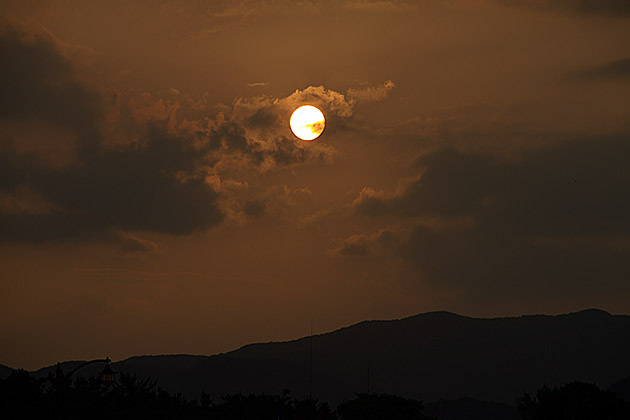

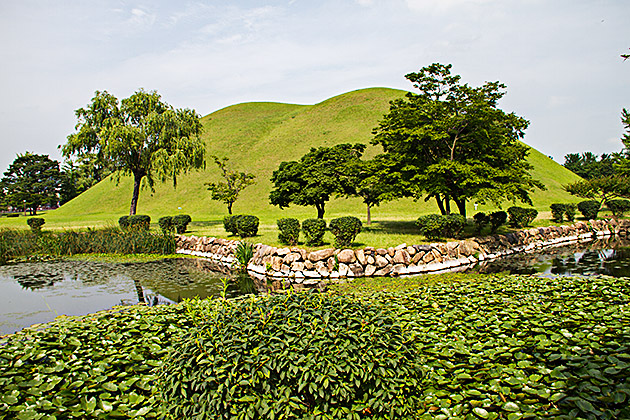
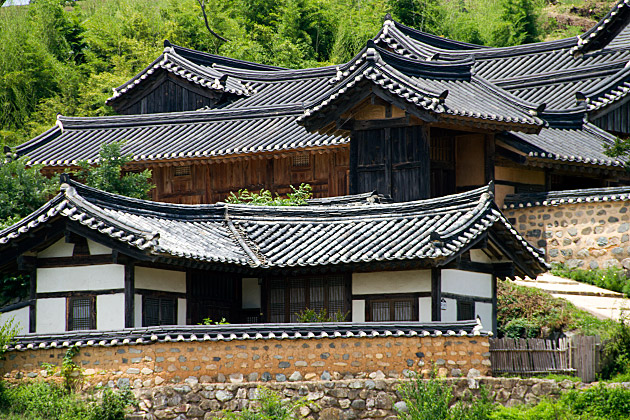

I love those Gyeognju mascots! The cartoon mascots you guys get in your photos are the best. I like that photo of the Buddha, with the orange lilies in the foreground. Awesome photo overall. I forget sometimes how much I love Korean art. I also like the photo of the guy in the straw hat lying in the grass. I like the story of the remaining stone outline of the Hwangnyongsa Temple. It kind of reminds me of the ending lines of the opera Akhnaten, by Phillip Glass. I also like the story of the Cheoseongdae Observatory, how the 362 slabs match the days in the Lunar Calendar. I love that kind of stuff.